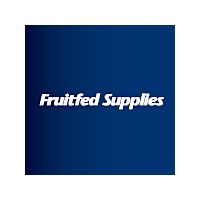
Canterbury strawberry farm Hauora Produce expand ahead of next season
A decision to jump into a new life as strawberry growers is paying off for a young Canterbury couple, Ed and Kate Hobson.
Ed and Kate purchased a relatively new and well-setup operation near Darfield, North Canterbury in 2021 and, with the early help of previous owners Jason and Anne Hann, they’re now partway through their third season selling tens of thousands of fresh strawberries around the region under the banner Hauora Produce.
They both have backgrounds in the primary sector. Ed’s previous role saw him overseeing the nutritional needs of grain-finished beef on an export feedlot in Ashburton. While Kate’s professional training is as a nurse, her family are dairy farmers in Canterbury.
“We were looking for an opportunity to get into the horticultural side of things,” Ed says. “We felt there was strong potential for growth in this sector during our lifetimes."
The original setup included a 1,500 sqm plastic-covered greenhouse with tiered growing tables for 21,000 strawberry plants in coir bags and five smaller greenhouses, covering about 750 sqm, which originally grew raspberries. No changes were made for the first season while Ed and Kate had a crash course in strawberry growing from the Hanns.
“We grew the same variety of berry, used the same punnets and had mostly the same staff. Jason and Anne were great, working with us for a couple of weeks after handover; always on the end of the phone and pretty much becoming our second parents.
“In our second season, we tweaked a few things, moving the raspberries outside and installing more strawberries in the smaller greenhouses to bring our total number of plants up to 27,000.”
This season, strawberry growing fits around the needs of a new generation of their family. Ed is putting his market trading skills to good use, establishing direct sales channels with local cafes and greengrocers, and selling berries near a local tavern and at regional markets.
“We want to manage our stock volume with small, frequent deliveries. Early in the season, we were turning people away until the volume increased so we could look after existing customers. Now, mid-season, we’re into what we call the stonefruit phase when people have so many fruit choice options.”
With plants grown in coir bags and a fertigation system supplying water and nutrients, the season’s routine sees plants and grow bags being replaced each year as part of their crop hygiene goals. The biodegradable coconut coir grow bag filling is spread on nearby paddocks.
“Berries grown hydroponically in gutters have an increased risk of pest or disease spreading through the whole line. With eight to ten plants per grow bag, if we have an isolated issue, we can simply pull that bag out.”
Ed and Kate aim to grow with minimal sprays, making the most of available organic and conventional crop protection products alongside beneficial insects for pest control.
In terms of crop protection, nutrition products and advice, Ed and Kate can call on the developing knowledge of their local Technical Horticultural Representative Kiri Matthews, who recently joined the Canterbury team. Kiri was the Fruitfed Supplies’ Massey University student scholarship winner in 2022. Canterbury Area Sales Manager Blair Murdoch is also available to provide any additional technical advice they may need, and handily lives not far away.
Last season’s lack of new strawberry runners meant they’ve continued with quite a lot of second year plants this year which has been challenging.
“They’ve been more susceptible to pest and disease, and the fruit is smaller, so we cut them back hard at Christmas and wrote off a month of production but will hopefully now get fruit through to May.
“Once we get into early winter, we might turn off some tables early to stagger the process of lifting all the grow bags out, sterilising the whole greenhouse, putting new bags in and inflating them. All up, that’s a solid two or three weeks of work. We expect new runners to arrive in the second half of June, then we’re into the other big job of planting. Things are relatively quiet for about three months while plants grow, then we’ll probably have a light pick around September and the volume increases as the season warms up. During the main season, they’re pretty easy to grow but we’re checking plant health regularly. The level of pest and fungus pressure is the main factor in deciding when we’ll switch off the fertigation system in autumn.”
Strawberries aren’t a big crop in the South Island, but the Hobsons have attracted plenty of local support for their flavoursome berries. Next season they aim to more than double the number of strawberry plants they grow alongside the requisite expansion of the area under cover.
“The raspberries will be back into production next season, as an outdoor crop. Then, from there, we’re thinking about our options over the following two or three years to potentially grow other produce.”
